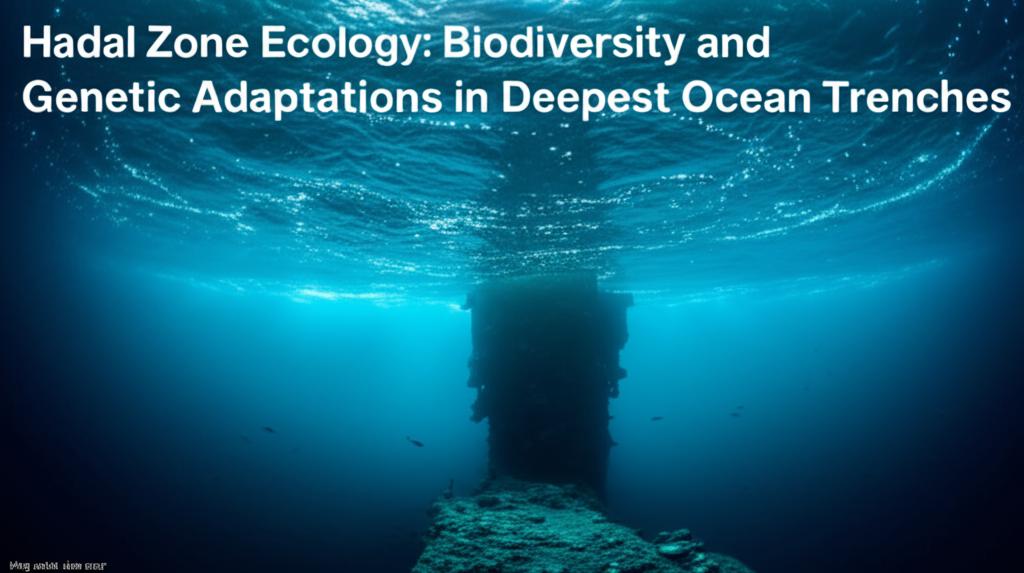The hadal zone, encompassing the deepest parts of our oceans from 6,000 to 11,000 meters, is a realm of crushing pressures, perpetual darkness, and near-freezing temperatures. Despite these extreme conditions, recent scientific explorations have revealed a surprisingly diverse and flourishing ecosystem, challenging previous assumptions about the limits of life.
Thriving Biodiversity in the Deepest DepthsOnce considered sparsely populated, the hadal zone is now understood to host a significant variety and abundance of life. Groundbreaking research, such as the Mariana Trench Environment and Ecology Research (MEER) Project initiated in 2021, has unveiled an extraordinary diversity of microorganisms. One study identified over 7,564 new species-level genomes of prokaryotic microorganisms, with nearly 90% previously unknown to science. This microbial diversity is comparable to the total number of already known marine microorganisms globally.
Beyond microorganisms, new species of macroorganisms are also being discovered. For example, Dulcibella camanchaca, a fast-swimming predatory amphipod nearly 4 centimeters long, was recently identified in the Atacama Trench. This crustacean uses specialized raptorial appendages to capture smaller prey, highlighting the complex food webs that exist even in these extreme environments. Researchers are continuously working on new methods, like vacuum-powered samplers, to collect a wider array of life forms, including larval and juvenile stages of various species, to better understand the full scope of hadal biodiversity.
Genetic Marvels: Adapting to the ExtremesLife in the hadal zone has evolved remarkable genetic adaptations to survive the immense hydrostatic pressure, lack of light, and limited food sources.
Microorganisms in these deep trenches have developed unique evolutionary traits for energy intake and pressure resistance. Studies have shown that some hadal microorganisms exhibit enhanced antioxidation capacity and accumulate intracellular compatible solutes to cope with the harsh conditions. The simplification of antioxidant pathways in some of these organisms may even offer insights for human health, potentially aiding in understanding anti-oxidation, aging, and disease.
Deep-sea fish also showcase incredible genetic adaptations. Research on fish from the Mariana and Indian Ocean trenches has revealed convergent evolution, where different species independently evolved similar genetic mutations to survive in these high-pressure environments. For instance, a highly conserved convergent mutation in the rtf1 gene, which influences how DNA is coded and expressed, has been identified across various deep-sea fish species living below 3,000 meters. This mutation appears to enhance transcription efficiency, representing a novel genetic mechanism for pressure adaptation.
Interestingly, some long-standing hypotheses about deep-sea adaptation are being challenged. For example, previous research suggested that trimethylamine-N-oxide (TMAO), a compound that stabilizes proteins under high pressure, increases in fish with depth. However, recent studies found no significant rise in TMAO levels in fish living below 6,000 meters, suggesting alternative or additional adaptive strategies are at play in the hadal zone.
The Importance of Hadal Zone ResearchThe exploration of hadal zone ecology is crucial for several reasons. It redefines our understanding of the limits of life and unveils unique evolutionary pathways forged over millions of years. These unique adaptations can inform us about resilience in changing environments and the potential impacts of climate change on even the most remote ecosystems.
Furthermore, the hadal zone plays a significant role in global biogeochemical cycles, including carbon cycling and nutrient distribution. Understanding these processes is vital for a holistic view of ocean health. The discovery of new species and novel biochemicals in these depths could also lead to applications in biotechnology, medicine, and energy.
Challenges and the Future of Hadal ExplorationStudying the hadal zone remains a significant challenge due to its extreme depths and the technological hurdles associated with sampling and observation. However, advancements in deep-sea submersible technology, including human-occupied vehicles (HOVs) like Fendouzhe and remotely operated vehicles (ROVs), are enabling more systematic and comprehensive research. International collaborations and dedicated research programs are exponentially increasing our knowledge of these unique ecosystems.
Despite recent progress, the hadal zone is still comparatively understudied compared to shallower marine environments. There is a critical need to continue exploring these deep-sea frontiers to understand how their ecosystems function, document their unique biodiversity, and develop strategies for their monitoring and conservation, especially in the face of increasing anthropogenic pressures such as pollution. Recent studies have unfortunately detected human-made pollutants like polychlorinated biphenyls (PCBs) and microplastics in organisms inhabiting even the deepest trenches, underscoring the far-reaching impact of human activities.
The ongoing exploration of hadal trenches is not just about discovering new species; it's about understanding the fundamental principles of life, its adaptability, and the interconnectedness of all Earth's ecosystems. Each new finding from these abyssal depths provides another piece of the puzzle in comprehending the full extent of biodiversity on our planet and the remarkable ways life can thrive in the face of extremity.

